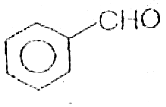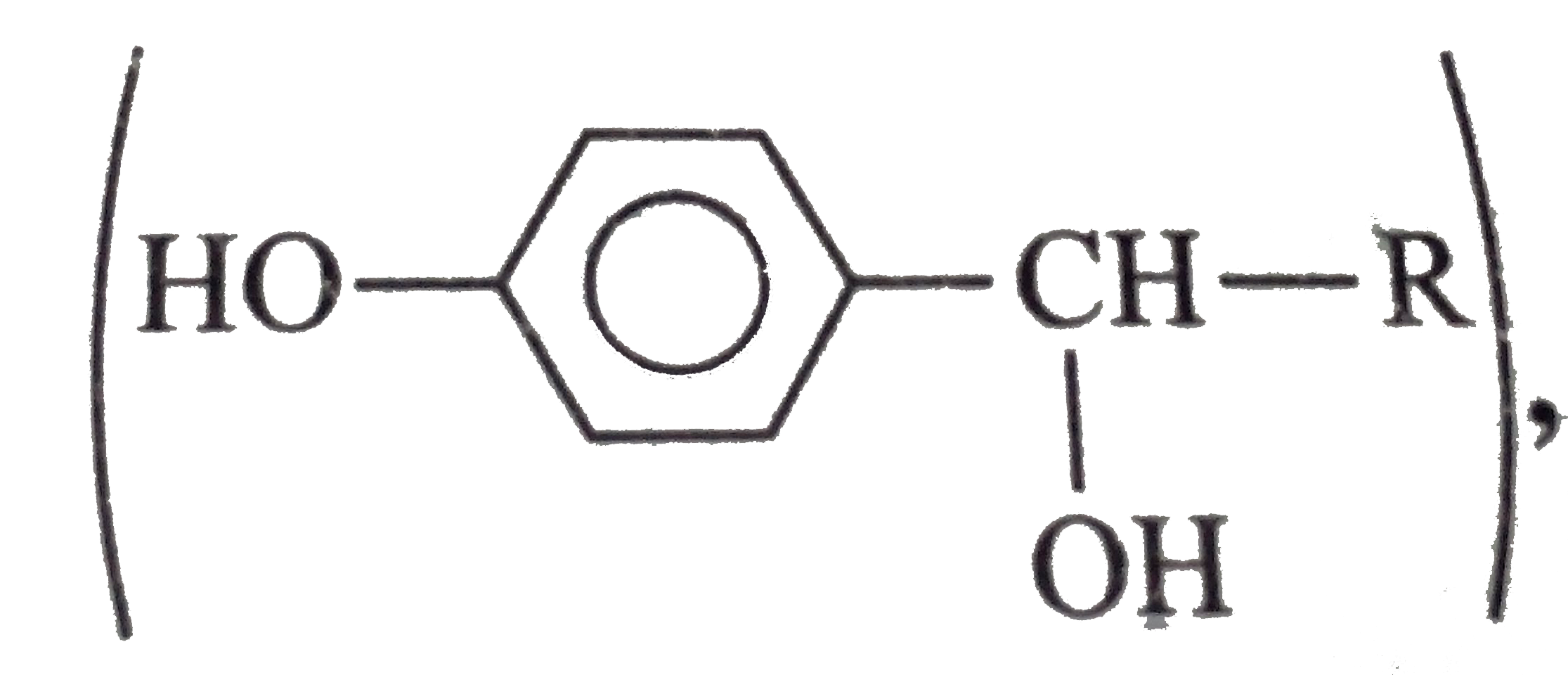Give suitable explanation for the following:
(i) Chloral hydrate is a geminaldiol but still stable. How?
(ii) Out of  and CH3CH2CHO which is more reactive nucleophilic addition?
and CH3CH2CHO which is more reactive nucleophilic addition?
(iii) Why does pure HCN fail to reac with aldehydes and ketones?
(iv) Hydrazones of aldehydes and ketones are not prepared in strongly acidic mediu. Why?
(v) Sodium bisulphite is used to purify aldehydes and ketones. Explain.

Chloral hydrate is a geminaldiol and still stable. It is due to intramolecular hydrogen bonding between Cl and OH groups of adjacent carbon atoms.
(ii) Propionaldehyde is more reactive, because in benzaldehyde, due to -M effect of -CHO group, it pulls electrons from benzene ring as a result electrophilicity on carbon of carbonyl group decreases and attack of nucleophile does not take place so efectively.
(iii) HCN is a mainly a covalent compound and cannot provide CN− ions readily for nucleophilic attack on carbonyl compounds. When reaction is carried out in the presence of base, it helps in ionising the acid and in liberating CN−
(iv) During hydrazone preparatin, hydrazine (i.e., NH2NH2) acts as a nucleophile. In stronly acidic medium hydrazine gets protonated and does not act as a nucleophile. As a result hydrazone of aldehydes and ketones cannotbe prepared.
( v) Except benzophenone, aldehydes and ketones react with saturated solution NaHSO3 to form white crystaline precipitate of thier addition products. Which can be easily decomposed by aqueous HCl or NaOH to regenerate these compounds in pure state.
Topper's Solved these Questions
- ALDEHYDES, KETONES AND CARBOXYLIC ACIDS BOOK - AAKASH INSTITUTECHAPTER - ALDEHYDES, KETONES AND CARBOXYLIC ACIDS EXERCISE - Assignment (SECTION -J Akash challengers Questions)
7 Videos
- ALCOHOLS, PHENOLS AND ETHERS BOOK - AAKASH INSTITUTECHAPTER - ALCOHOLS, PHENOLS AND ETHERS EXERCISE - Try Yourself
5 Videos
- AMINES BOOK - AAKASH INSTITUTECHAPTER - AMINES EXERCISE - Assignment Section -J (Aakash Challengers Questions)
9 Videos
Similar Questions
Give suitable explanation for the following:
(i) Chloral hydrate is a geminaldiol but still stable. How?
(ii) Out of and CH3CH2CHO which is more reactive towards nucleophilic addition?
and CH3CH2CHO which is more reactive towards nucleophilic addition?
(iii) Why does pure HCN fail to react with aldehydes and ketones?
(iv) Hydrazones of aldehydes and ketones are not prepared in strongly acidic medium. Why?
(v) Sodium bisulphite is used to purify aldehydes and ketones. Explain.
View SolutionNA (nucleophilic addition) reaction of alcohols with aldehydes gives hemiacetal, whereas phenols react with aldehydes and ketones in acidic medium and give electrophilic substitution product (I)
 , which further reacts with phenol to give (II)
, which further reacts with phenol to give (II)  , Explain.
, Explain.
View Solution
Knowledge Check
Arrange these compounds in decreasing order of reactivity for the nucleophilic addition reaction.
(I) Acid chloride (II) Aldehyde (III) Ketone (IV) EsterAI>II>III>IVBIV>III>II>ICIII>II>I>IVDI>IV>II>III
How would you account for the following :
(i) Aldehydes are more reactive than ketones towards nucleophiles.
(ii) The boiling points of aldehydes and ketones are lower than those of corresponding acids.
(iii) Aldehydes and ketones undergo a number of addition reactions.
View SolutionGive reasons for the following :
(a) Carboxylic acids do not give characteristic reactions of carbonyl group.
(b) Treatment of benzaldehyde with HCN gives a mixture of two isomers which cannot be separated even by careful fractional distillation.
(c) Sodium bisulphite is used for the purification of aldehydes and ketones.
View Solution(a) How many you account for the following :
(i) Aldehydes are more reactive than ketones towards nucleophiles.
(ii) The boiling points of aldehydes and ketones are lower than of the corresponding acids.
(iii) The aldehydes and ketones undergo a number of addition reactions.
(b) How will you distinguish between these compounds:
(i) Acetaldehyde and benzaldehyde
(ii) Propanone and propanol
View Solution(a) How many you account for the following :
(i) Aldehydes are more reactive than ketones towards nucleophiles.
(ii) The boiling points of aldehydes and ketones are lower than of the corresponding acids.
(iii) The aldehydes and ketones undergo a number of addition reactions.
(b) How will you distinguish between these compounds:
(i) Acetaldehyde and benzaldehyde
(ii) Propanone and propanol
View SolutionAccount for the following:
(i) Ethanal is more reactive towards nucleophilic addition reactions than propanone.
or CH3CHO is more reactive than CH3COCH3.
(ii) Di-tert-butyl ketone does not give a NaHSO3 adduct but acetone does.
View SolutionAnswer the following:
(i) Why 100 % pure acetic acid is named glacial acetic acid?
(ii) What is vinegar and how is it made?
Why the C-O in RCOOH is less reactive towards nucleophiles than in aldehydes and ketones?
View SolutionGive reasons :
(i) The α-hydrogen atoms of aldehydes and ketones are acidic in nature.
(ii) Propanone is less reactive than ethanal towards addition of HCN.
(iii) Benzoic acid does not give Friedel-Crafts reaction.
View Solution
